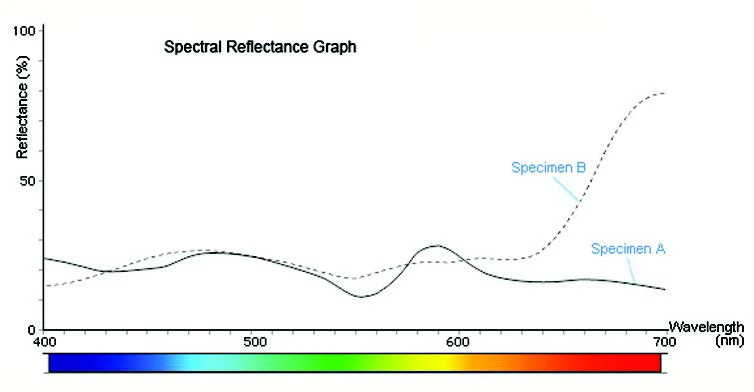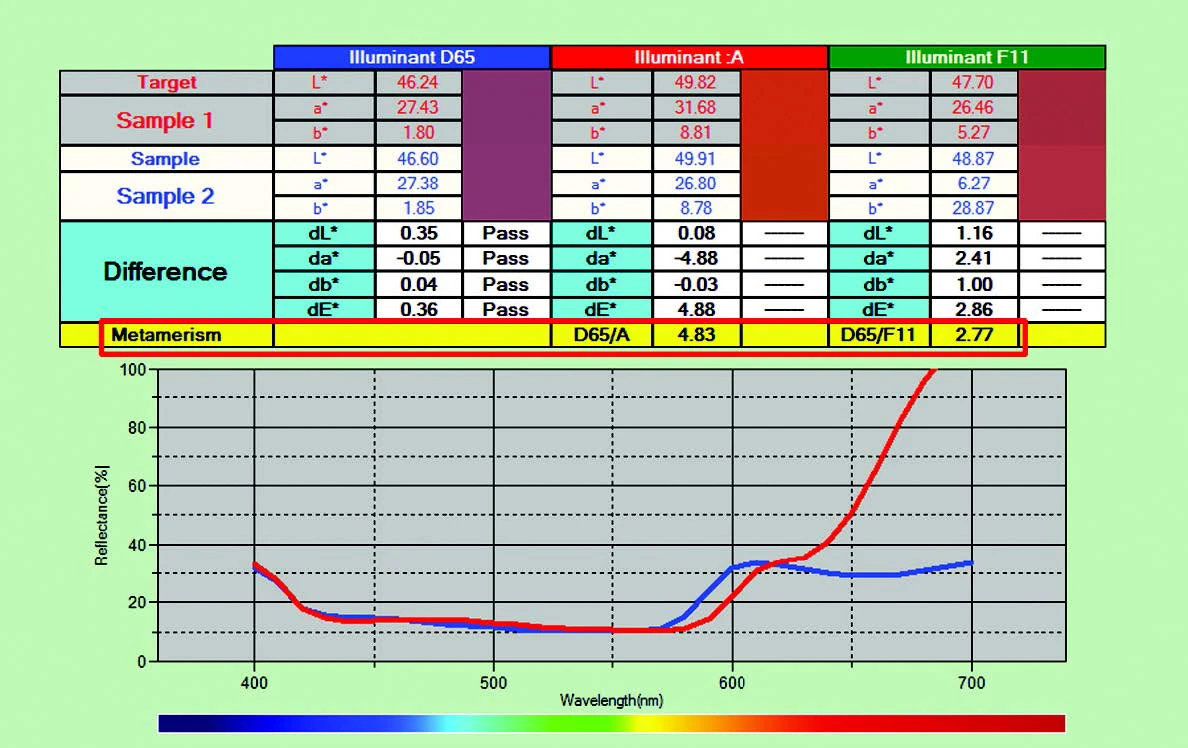Illuminant Metamerism in White Goods

The exact same colorants should be used when formulating product color to avoid metamerism. However, this is not entirely possible. For example, pigment is the common colorant utilized in paint and plastic while dye is preferred for paper or ink due to its solubility. Implementing a color formulation process is recommended to help identify the colorant combination of each color recipe that is least metameric.
With the help of a spectrophotometer, the spectral reflectance curves of two specimens can be compared to identify metamerism. Specimens are considered metameric when their spectral curves crossed each other at least three times. When used with a color QC software, Metamerism Index (MI) can be calculated to determine the relative color difference between two specimens under two different illuminants.
Besides metamerism, texture effects and goniochromism are other challenges commonly encountered by appliance manufacturers. Learn more about them and their solutions with this white paper.
Check out our testing and measurement solutions to learn more about color and appearance management and display performance evaluation of white goods.
Get in touch with us for a free consultation or to schedule a product demonstration.


